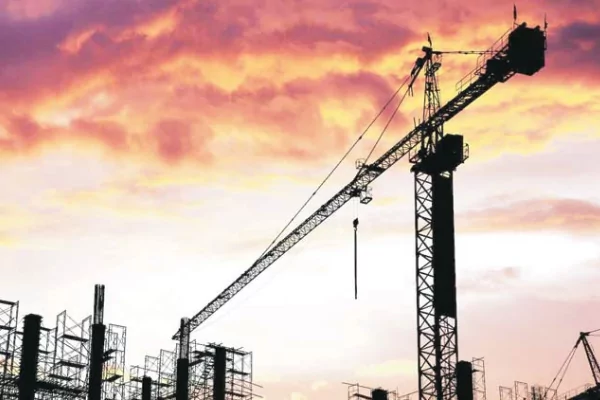How To Make A Dent In The Rs. 4.11 Trillion Cost Overruns In India's Infrastructure Projects?
India’s demand for infrastructure projects is huge. These projects involve the construction of roads, bridges, dams, and other structures that will form the backbone of the economy. In fact, estimates are that even a couple of years ago, 9% of India’s GDP was spent on construction infrastructure.
But, the construction sector in India also suffers from multiple issues that hold up the construction of such projects. An array of challenges including land acquisition, labour availability and management, and traditional delivery practices cause delays and push up construction costs. In fact, a recent report by the Ministry of Statistics and Programme Implementation says that from 412 major infrastructure projects in the country have suffered cost overruns to the tune of Rs 4.11 Lakh Crores.
Cost overruns are a serious issue especially in a resource-constrained nation like India. So how can infrastructure management and construction companies reduce or eliminate cost overruns?
The answer lies in technology and digital transformation, 2 principles, which have often been ignored by the sector in India even though developed nations have been making steady progress.
So, let’s explore how technology can help eliminate cost overruns in a construction project across various stages:
Improving Design Efficiency
Architectural design along with other preconstruction consulting services forms a sizeable portion of the project cost and can range as much as 15% of the entire project budget. Using Building Information Modelling, architects and design engineers can visualize the project in every possible granular format. Using 3D modelling, it becomes easier to map out building components and accommodate requirements to ensure that the design is as comprehensive and foolproof as possible. Incomplete or inaccurate plans from engineers can lead to serious problems during the construction and can lead to costly disputes and substandard construction work being done by contractors owing to lack of clarity. With a digital backbone managing the entire design process, it is easier to consolidate inputs from various stakeholders, establish common ground, make better material and resource estimates, and drive on-site efforts faster and more efficiently. I have appealed previously to the government to make BIM mandatory for public infrastructure projects like the UK. It was reported some time ago that the UK government expected to save over 400 million pounds each year due to the application of BIM.
Manage Scope Changes
One of the most important challenges in a construction project is the management of changes. No matter, how much effort was taken to take into confidence, all stakeholders during the design phase, scope changes are bound to creep in during construction. It is considered normal here. Since it is impossible to eliminate scope changes during construction, the next best thing to do is to use technology to manage and integrate these changes into the project plan as seamlessly as possible without escalating costs. A centralized BIM platform can help in capturing changes and communicating the same along with the changed course of action to all project team members both on the job site on their mobile phones, as well as key personnel in areas such as procurement, vendor management, finance, and supply chain. Providing the right information about changes transparently at the right time can help in preventing clashes, reducing the timeline for contractors to incorporate changes, prevent resource wastage, and get necessary legal or regulatory compliance approvals for accommodating the change.
Manage Disputes
In several high-value projects, the number of stakeholders involved is quite large in number. One major outcome of this high number is that the number of disputes arising during construction will be high as well. More disputes will lead to more delays and ultimately more cost overruns. Design issues alone account for nearly 38% of all disputes in a construction project according to a study by Engineer’s Daily. Most disputes happen due to inefficient project planning and management which is done predominantly by manual means. By bringing on board a seamless BIM and project management platform, it becomes easier for different stakeholders to be held accountable for their activities. Through transparent reporting of progress, every calculated move in the construction stage can be vetted by all stakeholders and this will eliminate disputes over the finished product. Eventually, virtual demonstrations coupled with modern-day techniques like Augmented Reality or Virtual Reality can help stakeholders visualize design elements in more realistic perspectives and give their suggestions upfront and thus eliminate future disputes. Project management platforms help define daily activities, schedules, and task priorities to ensure that the construction progresses smoothly and in alignment with approved design principles.
Eliminate Errors for Administration
Every construction project involves a hefty administrative back-end operation taking care of various compliance, auditing, and approval processes. When these activities are done manually, the scope for errors is high and at times errors in administrative calculations can prove to be costly. It could lead to various site supervisors or contractors not being informed about changes, guidelines, or safety protocols which in turn can create regulatory and legal compliance complications for the project leading to delays and cost overruns. With the help of technology, several mundane manual processes can be automated. For instance, reporting can be automated and made transparent. This will ensure that all administrative processes follow due diligence and any human errors are eliminated before their impact makes its presence felt in the actual construction site.
Cost overruns are a serious problem in the Indian infrastructure sector. By controlling them, there is a huge opportunity for optimizing the value delivered from the investments being made by the government on behalf of the people. By leveraging digital technology like BIM, projects can be better managed with lower scope for cost overruns. Be it automation of administrative efforts or improving design efficiency, there is a huge potential for Indian infrastructure players to capitalize on the several benefits of technology in their daily operations.

